Abstract
We have approached the problem of nerve excitability through three questions: (a) What is the diagram for a channel? That is, what conformational states can the protein assume, and what transitions between these conformations are permitted? (b) What is the channel conductance associated with each conformation the channel can assume? (c) How do the rates for conformational transition depend upon membrane potential? These three questions arise from a standard statistical mechanical treatment of a nerve membrane containing several classes of identical, independent channels. Gating of channels, in this view, is associated with conformational changes of the channel protein, and it is assumed these conformations are distinct. The precise formulation of these questions is presented in terms of the theoretical treatment, and the approaches we have taken to answer the questions are indicated. Our present results indicate: Transition rates should depend exponentially on membrane potential over a limited voltage range, but probably will show a more complex dependence for extremes of the range; channels probably can take on only two conductances, open and shut, but more complicated situations are not entirely excluded; the diagram for a channel cannot be determined from standard voltage clamp data alone, but by studying gating currents and conductance fluctuations, it should be possible to select between alternative plausible physical mechanisms.
Full text
PDF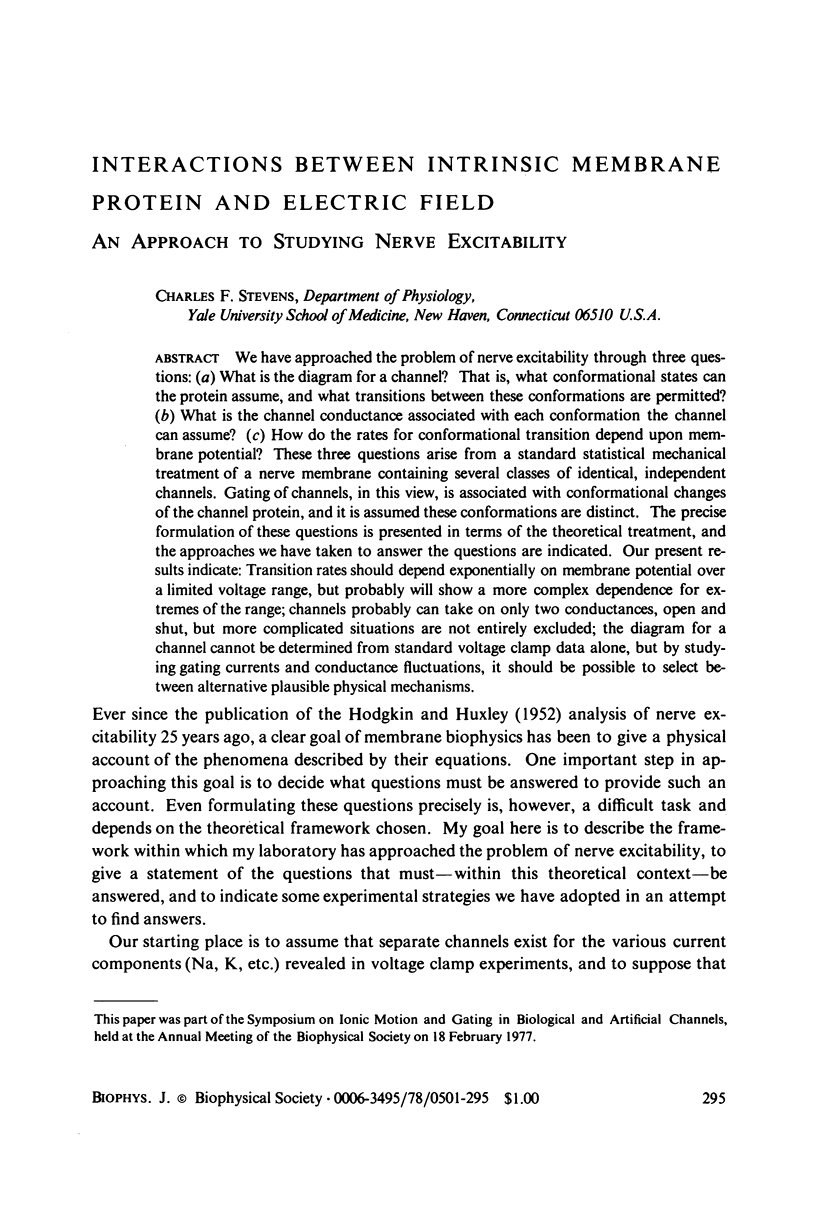
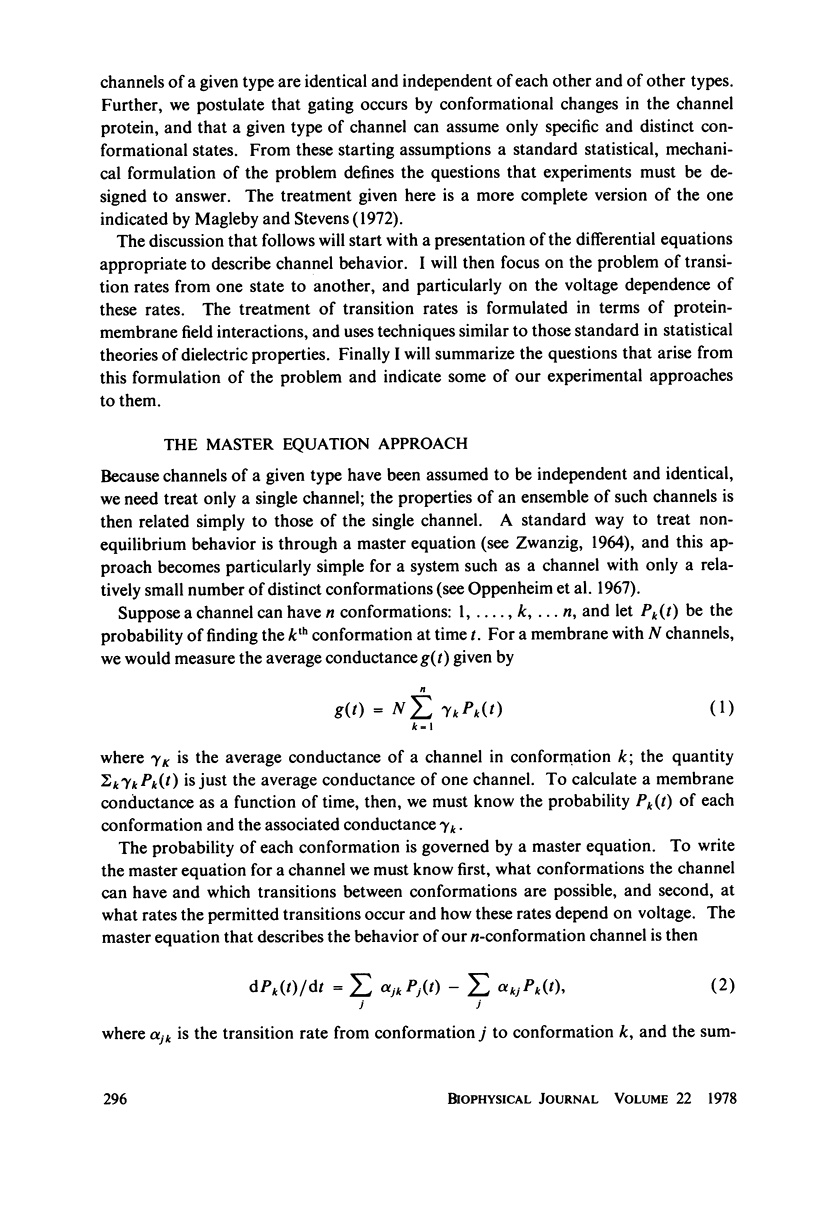
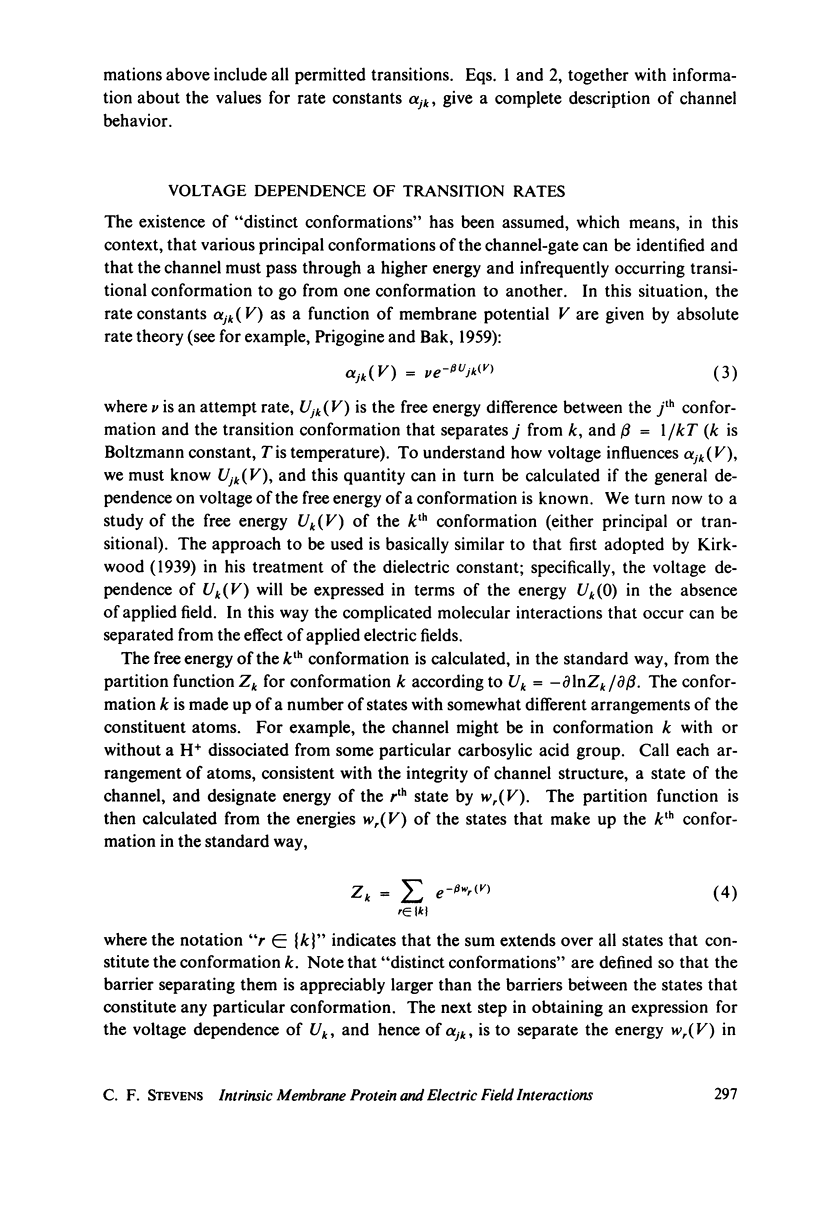
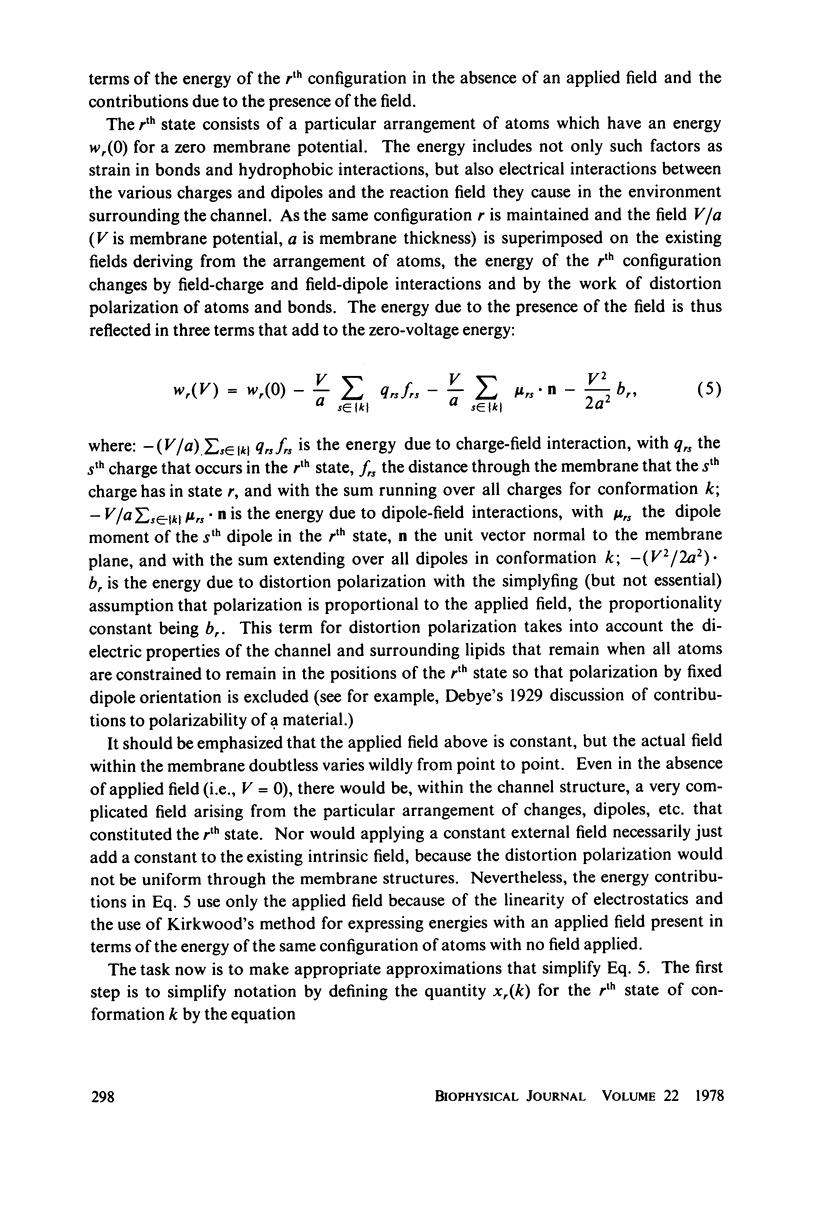
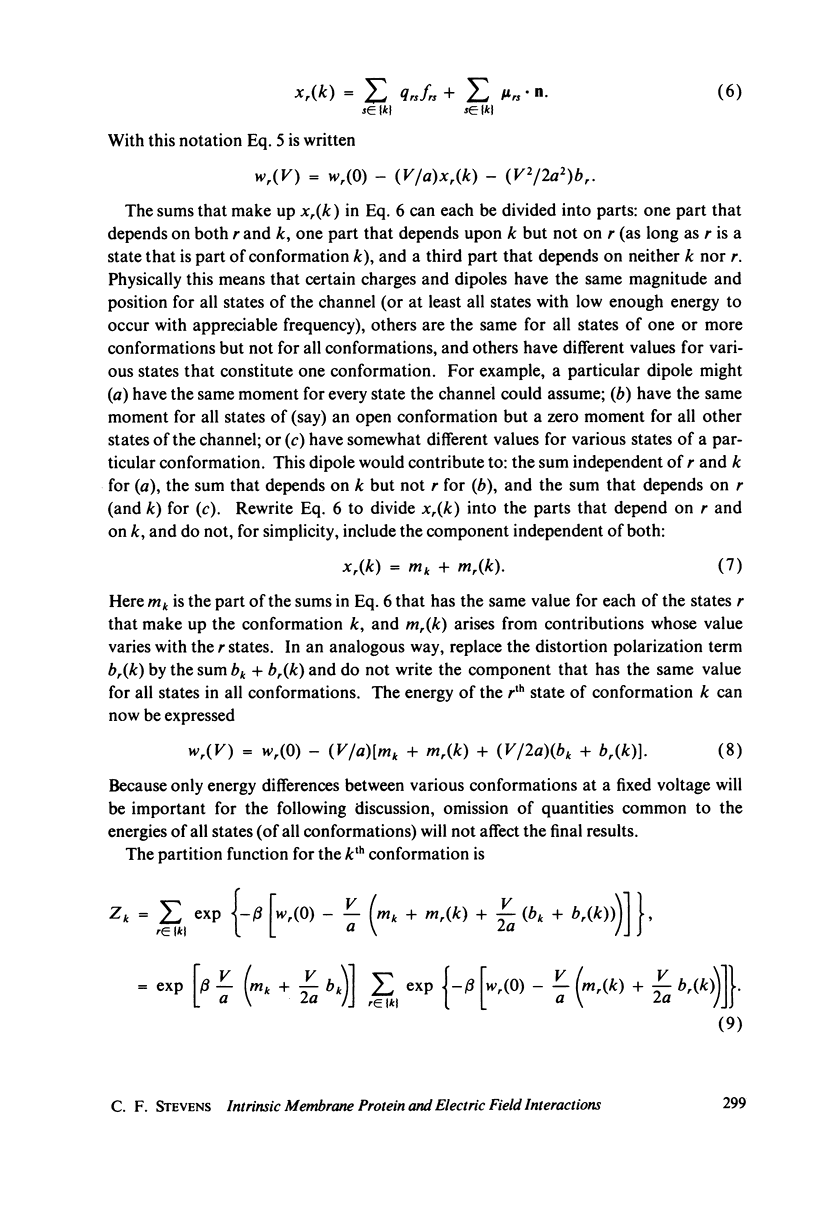
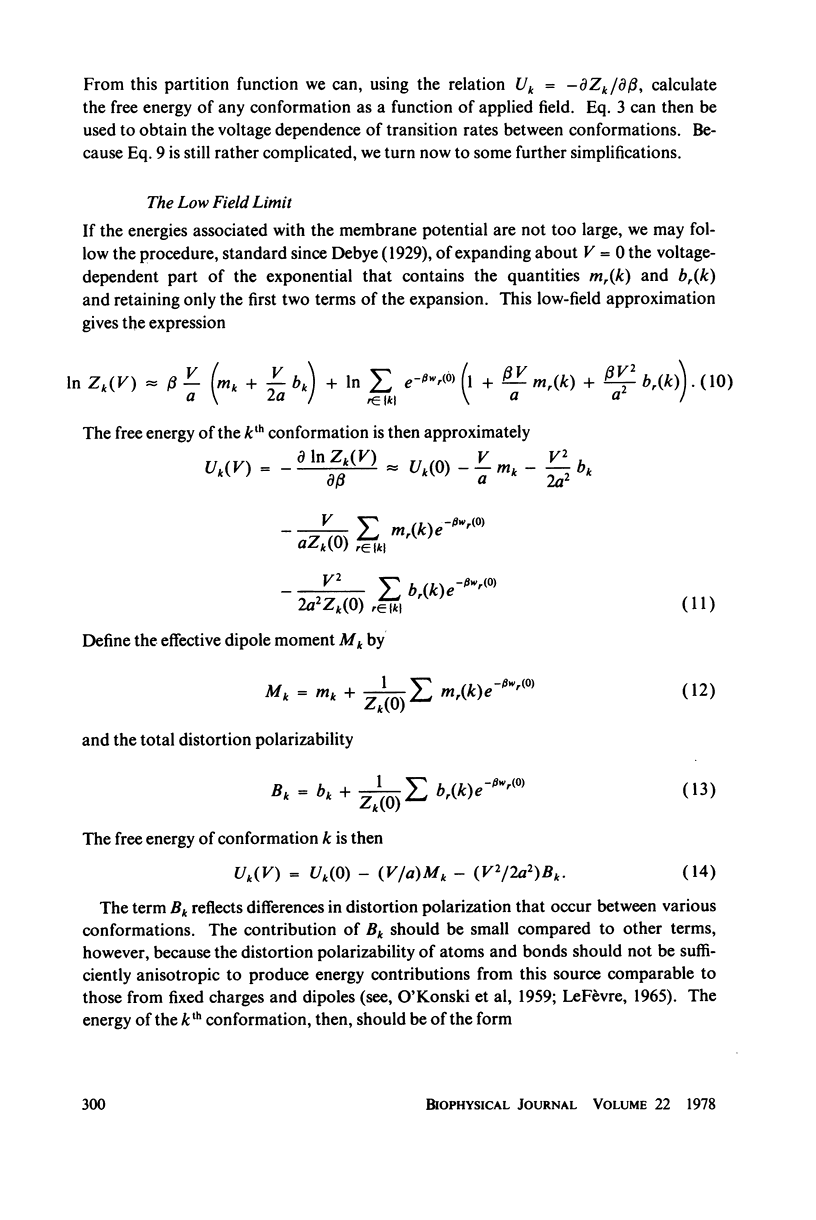
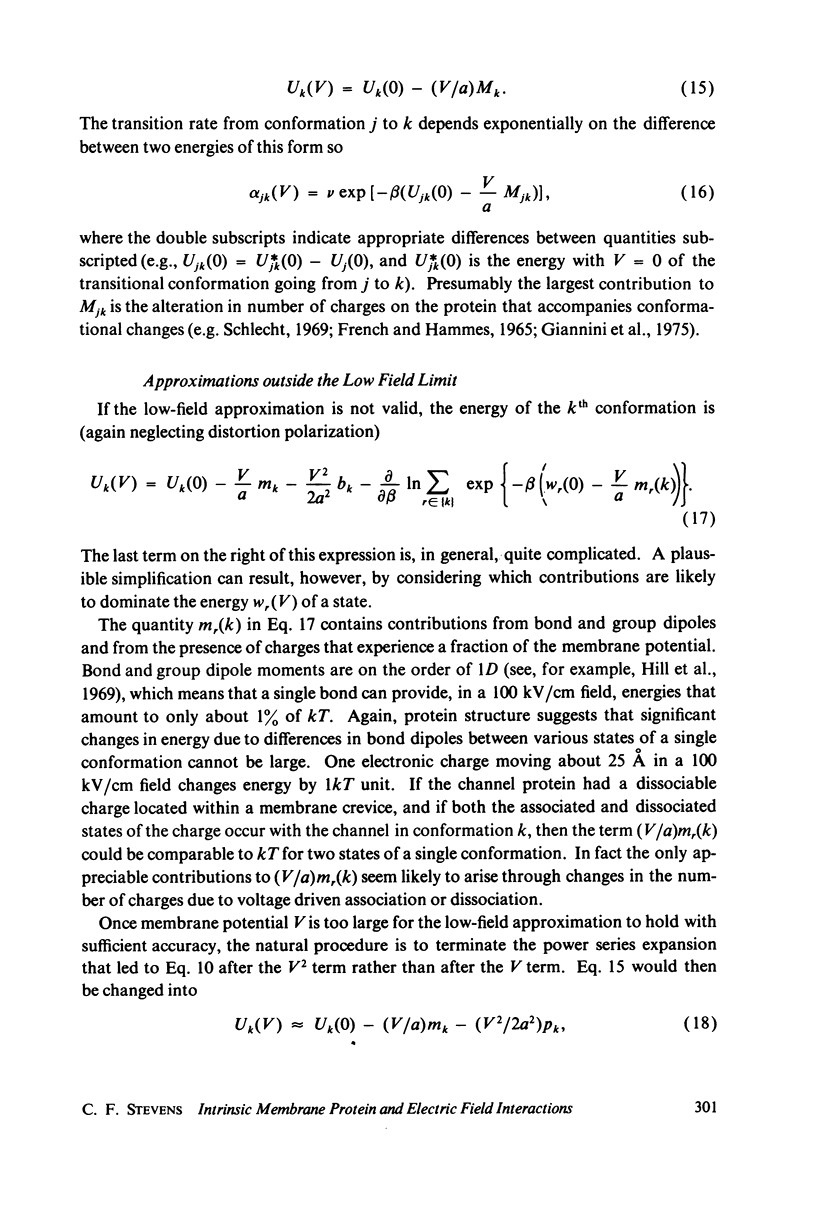
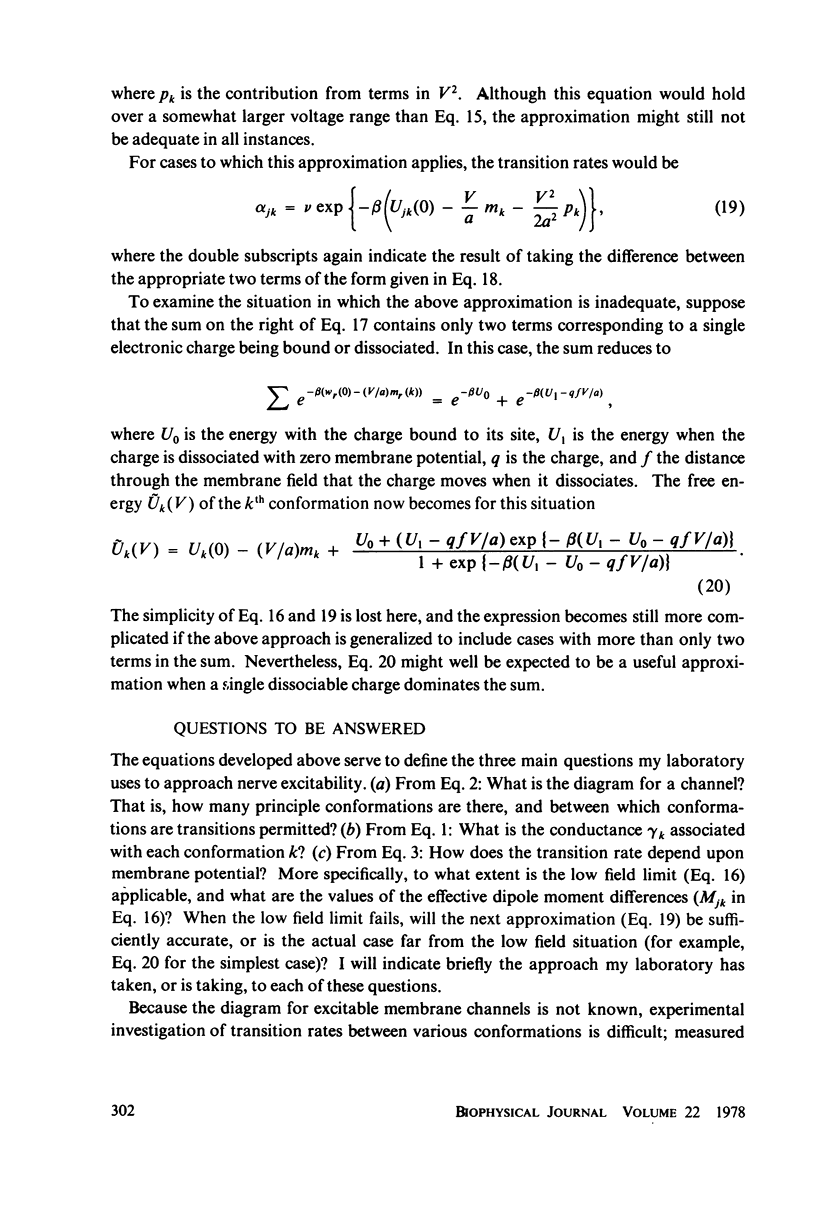
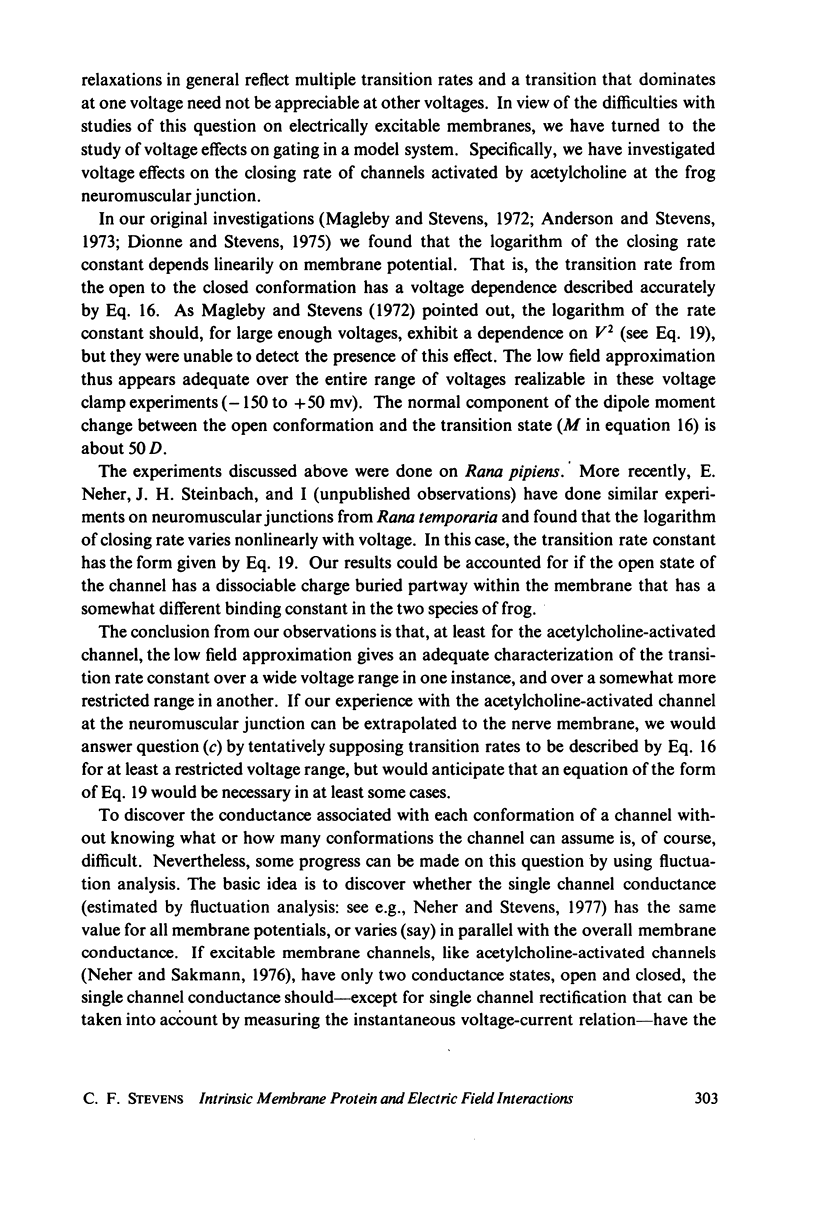
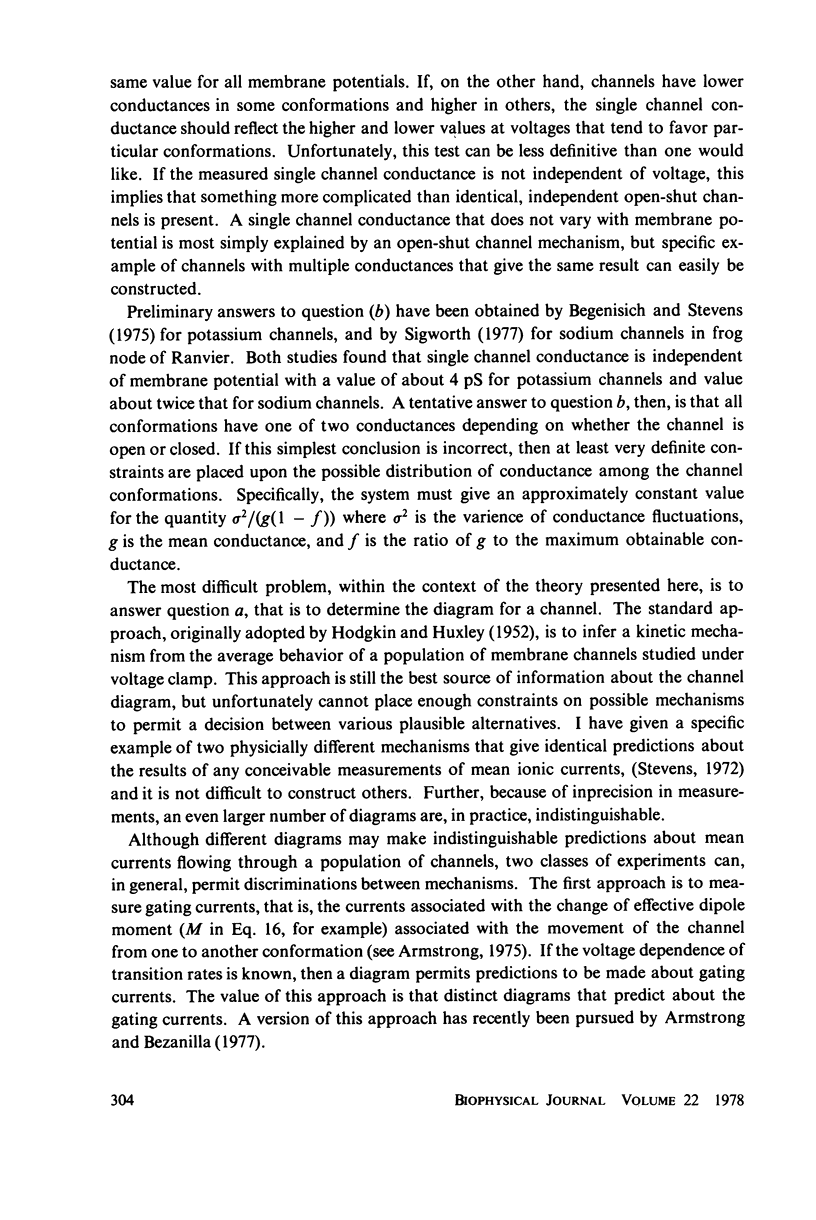
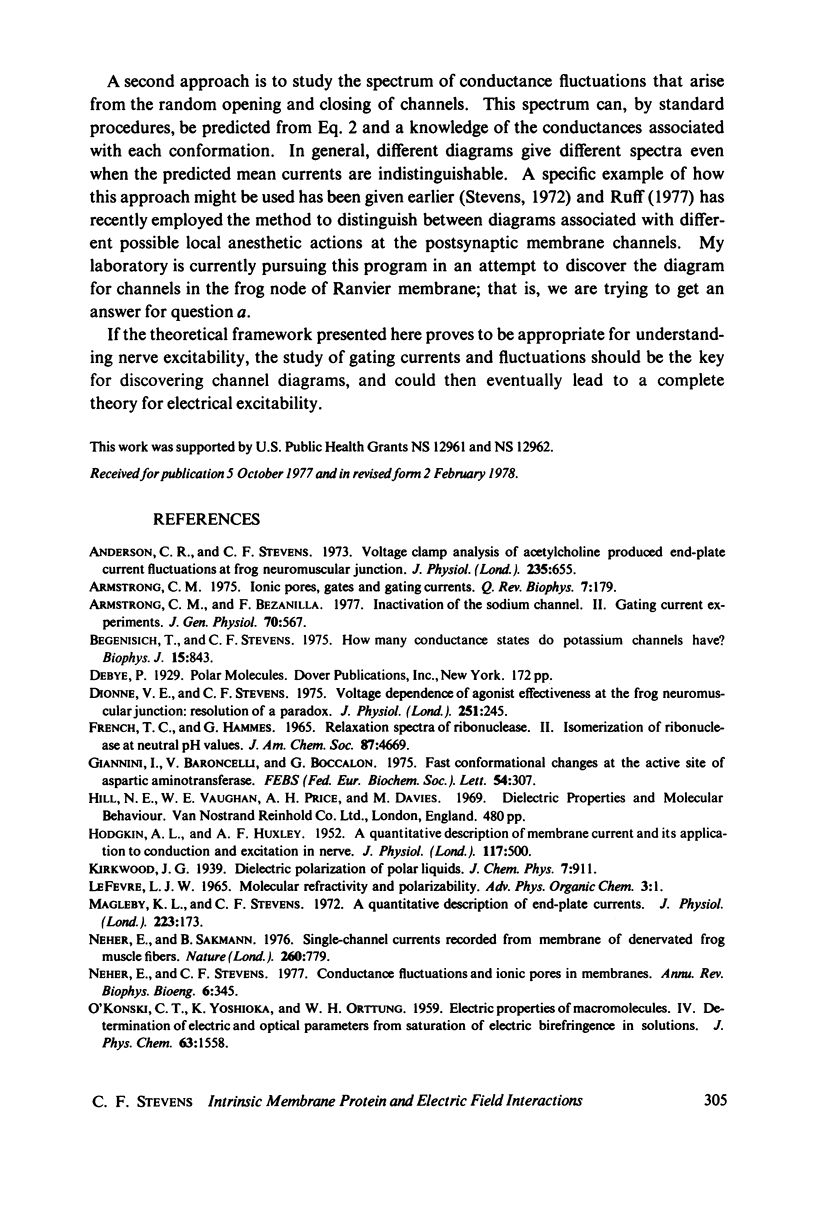
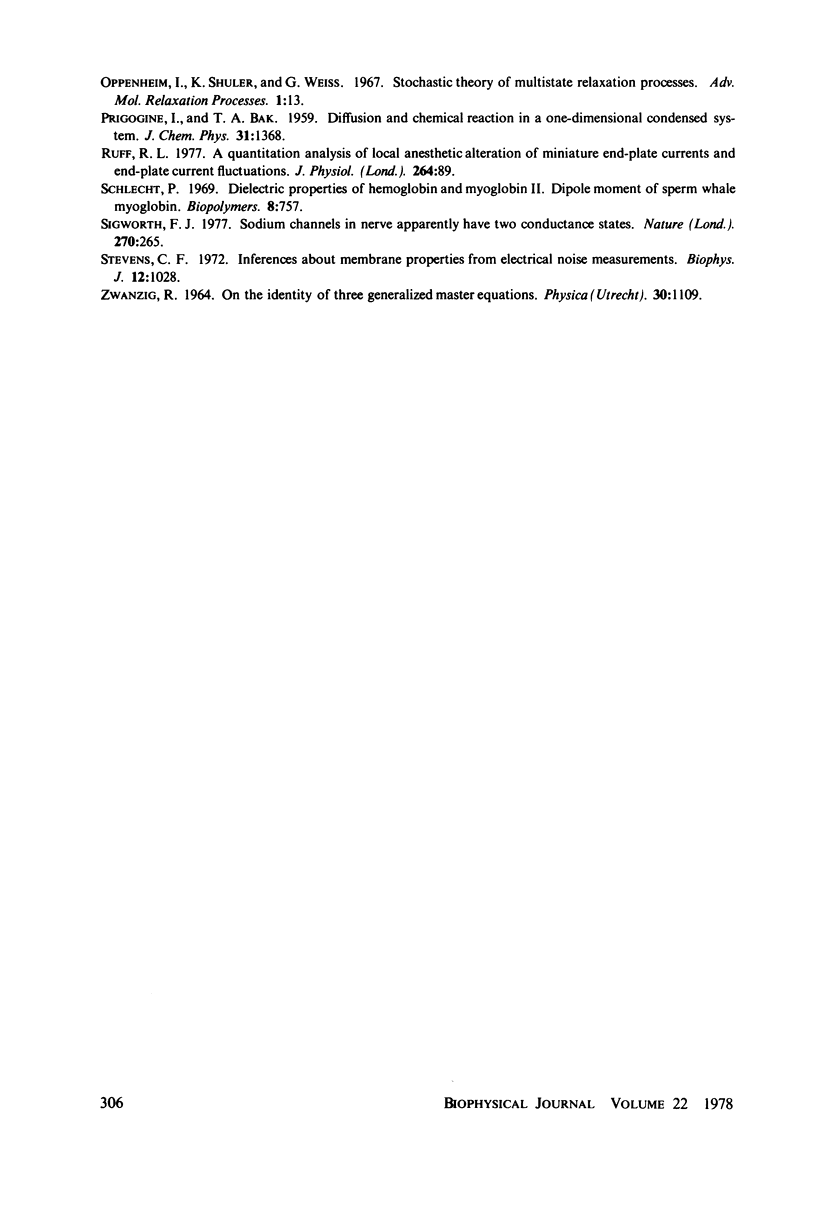
Selected References
These references are in PubMed. This may not be the complete list of references from this article.
- Anderson C. R., Stevens C. F. Voltage clamp analysis of acetylcholine produced end-plate current fluctuations at frog neuromuscular junction. J Physiol. 1973 Dec;235(3):655–691. doi: 10.1113/jphysiol.1973.sp010410. [DOI] [PMC free article] [PubMed] [Google Scholar]
- Armstrong C. M., Bezanilla F. Inactivation of the sodium channel. II. Gating current experiments. J Gen Physiol. 1977 Nov;70(5):567–590. doi: 10.1085/jgp.70.5.567. [DOI] [PMC free article] [PubMed] [Google Scholar]
- Armstrong C. M. Ionic pores, gates, and gating currents. Q Rev Biophys. 1974 May;7(2):179–210. doi: 10.1017/s0033583500001402. [DOI] [PubMed] [Google Scholar]
- Begenisich T., Stevens C. F. How many conductance states do potassium channels have? Biophys J. 1975 Aug;15(8):843–846. doi: 10.1016/S0006-3495(75)85858-9. [DOI] [PMC free article] [PubMed] [Google Scholar]
- Dionne V. E., Stevens C. F. Voltage dependence of agonist effectiveness at the frog neuromuscular junction: resolution of a paradox. J Physiol. 1975 Oct;251(2):245–270. doi: 10.1113/jphysiol.1975.sp011090. [DOI] [PMC free article] [PubMed] [Google Scholar]
- French T. C., Hammes G. G. Relaxation spectra of ribonuclease. II. Isomerization of ribonuclease at neutral pH values. J Am Chem Soc. 1965 Nov 5;87(21):4669–4673. doi: 10.1021/ja00949a002. [DOI] [PubMed] [Google Scholar]
- Giannini I., Baroncelli V., Boccalon G. Fast conformational changes at the active site of aspartic aminotransferase. FEBS Lett. 1975 Jul 1;54(3):307–310. doi: 10.1016/0014-5793(75)80927-6. [DOI] [PubMed] [Google Scholar]
- HODGKIN A. L., HUXLEY A. F. A quantitative description of membrane current and its application to conduction and excitation in nerve. J Physiol. 1952 Aug;117(4):500–544. doi: 10.1113/jphysiol.1952.sp004764. [DOI] [PMC free article] [PubMed] [Google Scholar]
- Magleby K. L., Stevens C. F. A quantitative description of end-plate currents. J Physiol. 1972 May;223(1):173–197. doi: 10.1113/jphysiol.1972.sp009840. [DOI] [PMC free article] [PubMed] [Google Scholar]
- Neher E., Stevens C. F. Conductance fluctuations and ionic pores in membranes. Annu Rev Biophys Bioeng. 1977;6:345–381. doi: 10.1146/annurev.bb.06.060177.002021. [DOI] [PubMed] [Google Scholar]
- Schlecht P. Dielectric properties of hemoglobin and myoglobin. II. Dipole moment of sperm whale myoglobin. Biopolymers. 1969;8(6):757–765. doi: 10.1002/bip.1969.360080606. [DOI] [PubMed] [Google Scholar]
- Sigworth F. J. Sodium channels in nerve apparently have two conductance states. Nature. 1977 Nov 17;270(5634):265–267. doi: 10.1038/270265a0. [DOI] [PubMed] [Google Scholar]
- Stevens C. F. Inferences about membrane properties from electrical noise measurements. Biophys J. 1972 Aug;12(8):1028–1047. doi: 10.1016/S0006-3495(72)86141-1. [DOI] [PMC free article] [PubMed] [Google Scholar]


